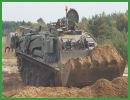| |
| |
Russia
 Back
Menu
Back
Menu
Russia may
unveil new super main battle tank T-95 in summer 2010
Russia's
new main battle tank (MBT), the T-95, could be exhibited
for the first time at an arms show in the Urals Region
this summer, the developer and future manufacturer of
the tank has said. The development of the new tank dubbed
"Item 195" began at the Uralvagonzavod design
bureau in the early 1990s. Russia will become the first
country in the world to have the 5th-generartion MBT
if the military commissions the vehicle. "The work
on the project has been conducted for many years. If
the government gives us a 'green light' we will exhibit
the tank at the [Russian Expo Arms 2010] arms show in
Nizhny Tagil this summer," general director of
the Uralvagonzavod plant Oleg Siyenko told RIA Novosti
in an exclusive interview. "I cannot disclose the
characteristics of the tank, but I can assure you that
we have met all the requirements put forward by the
military," he said. According to unofficial sources,
the T-95 will feature better firepower, maneuverability,
electronics and armor protection than Russia's latest
T-90 MBT or comparable foreign models. It will weigh
about 55 tons and its speed will increase from 30-50
kph to 50-65 kph (19-31 mph to 31-40 mph). The new tank
may be equipped with a 152-mm smoothbore gun capable
of firing guided missiles with a range of 6,000-7,000
meters. In contrast to existing designs, the gun will
be located in a remotely-controlled turret to improve
3-men crew survivability. Meanwhile, the T-90 MBT, developed
in the 1990s on the basis of the T-72B tank, will be
the backbone of the armored units until 2025, according
to the Russian military. Russia currently produces up
to 100 T-90 MBTs annually and plans to have at least
1,500 vehicles in service with the Ground Forces.
26 March 2010 |
|
|
|
| |
Sweden
(BAE Systems)  Back
Menu
Back
Menu
BAE Systems
has been awarded a £135 million ($200m) contract to commence series
production of 48 Archer 155mm self-propelled artillery gun systems.
BAE
Systems has been awarded a £135 million ($200m)
contract to commence series production of 48 Archer
155mm self-propelled artillery gun systems and their
associated ammunition handling systems for the Swedish
and Norwegian armed forces. The first operational systems
are expected to be delivered in October 2011 and production
will continue over the following two years. This production
contract follows a £100m ($146m) development programme
which began in 2003. Mike Smith, managing director of
BAE Systems, Global Combat Systems Weapons said: “Archer
is an important programme for the armed forces of both
countries and for BAE Systems’ land business,
as it is in a core area for us and will provide a springboard
for future exports. We appreciate the effort and cooperation
that the FMV and FLO – the national procurement
agencies - have invested in ensuring the procurement
of the most advanced and capable artillery system for
the Swedish and Norwegian armies.”
26 March 2010 |
|
|
|
| |
Brazil
 Back
Menu
Back
Menu
Russia delivers
first 3 attack helicopter gunships Mi-35M Hind E to Brazil.
Russia
has delivered the first batch of Mi-35M Hind E attack
helicopters to Brazil, a Russian state arms exporter
said on Thursday. Rosoboronexport spokesman Sergei Svechnikov
said a total of 12 helicopters are to be delivered under
a 2008 contract, worth $150 million. The Mi-35M is an
export version of the Mi-24 Hind that was used extensively
in Afghanistan. The Mi-24/35 is unique among dedicated
attack helicopters insofar as it can carry a load of
troops, in addition to performing its offensive role.
The Sao Paulo-based newspaper Valor Economico previously
reported that the Mi-35s would be used in the Amazon
region, in conjunction with Brazil's Embraer land and
ground surveillance jets. The Amazon region borders
both Venezuela and Colombia, and is a prime location
for trans-national narco-terrorists and drug traffickers.
25 March 2010 |
|
|
|
| |
| Russia
 Back
Menu
Back
Menu
Russian airborne
military exercises with drop of new 2S25 Sprut-SD self-propelled anti-tank
gun.
Over
300 paratroopers from the 76th Airborne Division will
be airdropped during military exercises in northwest
Russia on Thursday, Airborne Troops spokesman Col. Alexander
Cherednik said. "We plan to airdrop about 300 servicemen
and 12 airborne combat vehicles, three of them will
be dropped with the crew. In addition, for the first
time we will drop the newest Sprut self-propelled anti-tank
gun," he said. Exercises will also involve live
firing. They will be held under the command of the Airborne
Troops chief, Lt. Gen. Vladimir Shamanov. The Airborne
Troops are considered the most capable mobile assault
forces in Russia. Various estimates put the current
personnel at about 48,000 troops deployed in four divisions
and a brigade.
25 March 2010 |
|
|
|
| |
India
 Back
Menu
Back
Menu
Indian Army
has dispatched a global request for 12.7 mm machine gun.
The
Indian Army has dispatched a global request for information
(RfI) for the import of 12.7 mm heavy machine guns (HMGs)
capable of firing varied ordnance to a range of 2000
m as part of its Future Infantry Soldier as a System
(F-INSAS) programme, which is currently under development.
The 19 March RfI issued by the Directorate General of
Weapons and Equipment requires vendors to submit their
proposals within four weeks. The HMGs should be capable
of firing 450 rpm and should be deployable on light
strike vehicles and infantry fighting vehicles, as well
as on the ground with a three-man crew. According to
army specifications the 1.6 m-long HMGs should weigh
no more than 40 kg, including the mount/tripod.
24 March 2010 |
|
|
|
| |
United
States (General Dynamics)  Back
Menu
Back
Menu
General Dynamics
has been awarded $37 million for Abrams Tank Systems Technical Support.
General
Dynamics Land Systems, a business unit of General Dynamics
(NYSE: GD), has been awarded $37 million for Abrams
Tank Systems Technical Support (STS) by the U.S. Army
TACOM Lifecycle Management Command of Warren, Mich.
The award will fund engineering studies on Abrams main
battle tanks to identify improvements and replace obsolete
parts to maintain the tanks at high operational readiness
rates. The work will be performed by existing General
Dynamics Land Systems personnel in Sterling Heights,
Mich. It is expected to be completed by Dec. 19, 2011.
23 March 2010 |
|
|
|
| |
France
 Back
Menu
Back
Menu
DGA Delivers
3 New-Generation UAVs SDTI to the French Army.
The
Directorate General of Armaments (DGA) has just delivered
the last of three new-generation SDTI (interim tactical
UAV system) aerial vehicles, ordered in August 2009
from Sagem (SAFRAN Group) under the economic recovery
plan. This acquisition, worth 5 million euros, also
includes an initial support package (spares and technical
documentation). An unmanned aircraft weighing 350 kg,
the SDTI does not need a runway to take off and land:
it is launched from a trailer-mounted catapult, and
is retrieved after a parachute descent, once the mission
has been completed. The SDTI can operate for several
hours at a distance of about a hundred miles from its
deployment site while sending, in real time, images
and information collected by its optical (day) and infrared
(night) cameras to its ground control station or to
terminals operated by the ground troops, The three new
aircraft that have been supplied are fitted with lightweight
wings to increase their range and loiter times, especially
in “hot and high” conditions. Operated by
the 61st Field Artillery Regiment, based at Chaumont
since 2004, the SDTI is used for missions of intelligence
gathering, target acquisition and force protection.
Used in Kosovo from December 2007 to August 2008, the
SDTI has been deployed in the Afghan theater since October
2008. It has flown over 260 missions from the forward
operating base in Tora Surobi.
23 March 2010 |
|
|
|
| |
Russia
 Back
Menu
Back
Menu
Russian military
gets ready for large-scale drills in Far East.
The
commander of the Russian Ground Forces has arrived in
Russia's Far East to inspect the preparation for upcoming
strategic military exercises in the region. The Russian
Armed Forces will conduct large-scale Vostok-2010 military
exercises in Siberia and the country's Far East in June-July.
"Col. Gen. Alexander Postnikov will focus on practical
details of the exercises while visiting the locations
where the drills will take place," the Ground Forces
press service said in a statement. The upcoming drills
will involve units from the Far Eastern, the Siberian
and the Volga-Urals military districts, as well as the
Pacific Fleet. As part of the drills, the Armed Forces
will practice the deployment of additional troops in
Siberia and the Far East to strengthen the existing
military contingent in the region in case of a potential
military conflict. Russia holds Vostok strategic command-and-staff
exercises every two years. More than 8,000 troops took
part in Vostok-2008. The Russian military conducted
the Caucasus 2009, Zapad 2009 and Ladoga 2009 strategic
exercises, and 15 brigade-level and 161 battalion-level
drills last year.
22 March 2010 |
|
|
|
| |
Vietnam
 Back
Menu
Back
Menu
Vietnam hails
military cooperation with Russia.
The
Vietnamese defense minister said on Tuesday that the
current visit of his Russian counterpart to Vietnam
would strengthen bilateral military ties, which have
seen a significant improvement in the last few years.
Russian Defense Minister Anatoly Serdyukov arrived on
Monday in Hanoi to meet with the Vietnamese leadership
and discuss the prospects of military cooperation between
the two countries. "I am certain that these meetings
will give a new boost to our bilateral ties in the defense
sphere," Gen. Phung Quang Thanh said during talks
with Serdyukov. In response, the Russian minister said
that Russia considered Vietnam its strategic partner
and welcomed the steady development of friendly relations
with the south-east Asian state. Russia and Vietnam
have cooperated in the military sphere since 1953. In
1998, Moscow and Hanoi signed an intergovernmental agreement
on military cooperation, and a relevant Russian-Vietnamese
intergovernmental commission was established in 1999.
In October 2008, during the Vietnamese president's visit
to Moscow, Russia and Vietnam set up a strategy of military
and technical cooperation until 2020 by signing an inter-governmental
memorandum. Vietnam is gradually turning into the major
buyer of Russian armaments after India, with several
contracts worth billions of U.S. dollars signed recently.
The country became Russia's biggest arms client in 2009,
having ordered six Kilo-class Project 636 diesel-electric
submarines worth $4 billion and eight Su-30MK2 Flanker-C
multirole fighters worth $400 million. The contracts
signed since the start of 2010 are estimated at $1 billion,
including the order of 12 additional 12 Su-30MK2 fighters.
23 March 2010 |
|
|
|
| |
Russia
 Back
Menu
Back
Menu
Russian Armed
Force receive the first 10 new air-defense systems Pantsir S1 (SA-22
Greyhound).
The
first 10 Pantsir S1 (SA-22 Greyhound) antiaircraft surface-to-air
missile systems entered service with the Russian Air
Force, a Defense Ministry spokesman said on 18 March
2010. Pantsir-S1 is a short-to-medium range combined
surface-to-air missile and antiaircraft artillery system
manufactured by the Tula-based Instrument Making Design
Bureau (KPB). Lt. Col. Vladimir Drik said the new system
will enhance the effectiveness, stability and survivability
of national air defenses.
23 March 2010 |
|
|
|
| |
United
Kingdom  Back
Menu
Back
Menu
The British
Ministry of Defence has selected General Dynamics UK as the preferred
bidder for the demonstration phase of the new SV programme.
A
contract which will lead to the delivery of a new fleet
of medium weight armoured fighting vehicles has been
announced by Defence Secretary Bob Ainsworth today,
Monday 22 March 2010. The first tranche of the Specialist
Vehicle (SV) programme should deliver around 600 vehicles
to the front line, with the possibility of further purchases
in the future. The Ministry of Defence has selected
General Dynamics UK as the preferred bidder for the
demonstration phase of the new SV programme. This will
include development of Scout, the principal reconnaissance
vehicle that will replace the Scimitar vehicle currently
deployed in Afghanistan. The Specialist Vehicle fleet
will provide improved protection against a wide range
of threats and bring significant benefits to the Army,
including greater firepower, longer range sensors and
sighting systems and a higher level of reliability.
Under the proposed solution, around 70 per cent of the
work on the vehicles would take place in the UK, which
would ensure the creation or sustainment of over 10,000
British jobs within the armoured vehicle sector. The
announcement of the first of the Specialist Vehicles
comes after the commitment to order an initial batch
of 200 new Light Protected Patrol Vehicles (LPPVs) for
Afghanistan. The LPPVs being assessed by the MOD are
at the cutting-edge of technology, providing the right
balance between protection, weight and manoeuvrability
required by our Armed Forces on operations in Afghanistan.
22 March 2010 |
|
|
|
| |
Israel
 Back
Menu
Back
Menu
Israel Defence
Force IDF will establish a fourth combat engineering battalion.
The
Israel Defence Force (IDF) Army Headquarters will establish
a fourth combat engineering battalion and expand its
explosive ordnance disposal capabilities to guard against
future conflicts in Lebanon and the Gaza Strip. The
Combat Engineering Corps played a critical role in Israel's
December 2008-January 2009 operation against Hamas in
the Gaza Strip. It is credited with saving the lives
of countless Israeli soldiers by uncovering and defusing
Hamas improvised explosive devices (IEDs) as well as
booby-trapped tunnels. The corps will also upgrade its
main heavy armoured personnel carrier (APC), the Puma,
which is based on a turretless Centurion chassis.
21 March 2010 |
|
|
|
| |
Chechnya
 Back
Menu
Back
Menu
Six terrorists
killed from Al-Qaida connection by the Chechens Police.
Thursday,
18 March 2010, the Chechens police force killed six
terrorists among whom an Al-Qaïda representative
during a police operation announced the Chechen Minister
of Interior Rouslan Alkhanov. Vidéo Ria Novista
available to World Defense News Television of Army Recognition
magazine.
20 March 2010 |
|
|
|
| |
Israel
 Back
Menu
Back
Menu
Airstrikes
from the Israeli Army to the Gaza Strip.
Israeli
warplanes bombed at least four targets in the Gaza Strip
during the night in response to a rocket attack from
the Palestinian enclave which killed a foreign worker
on a kibbutz in Israel. There were no immediate reports
of any injuries as a result of the retaliatory air strikes
which hit a tunnel used for smuggling on the Egyptian
border, two open areas in Khan Younis and a metal foundry
near Gaza City. It was the strong reprisal action Israel
had promised after a group linked to al-Qaeda, Ansar
al Sunna, admitted carrying out the rocket attack on
the kibbutz, just north of the Strip.
19 March 2010 |
|
|
|
| |
United
States (Oshkosh)  Back
Menu
Back
Menu
Oshkosh Defense
has received a delivery order for 40 next-generation Heavy Expanded
Mobility Tactical Trucks HEMTT for the United Arab Emirates.
Oshkosh
Defense, a division of Oshkosh Corporation, has received
a delivery order from the U.S. Army TACOM Life Cycle
Management Command (TACOM LCMC) to supply more than
40 next-generation Heavy Expanded Mobility Tactical
Trucks HEMTT to the United Arab Emirates. The delivery
order, valued at $11.9 million, is part of the UAE's
Patriot Advanced Capability (PAC)-3 missile systems
purchase approved by the U.S. Congress. The HEMTT variants
included in this contract are the Patriot tractor, wrecker
and guided missile transporter. The vehicles will be
built and delivered July through September 2011. The
order was issued under the Army's Family of Heavy Tactical
Vehicles (FHTV) III contract.
18 March 2010 |
|
|
|
| |
Democratic
Republic of Congo  Back
Menu
Back
Menu
Ukraine is
going to supply the Democratic Republic of Congo with 20 T-72 assault
tank, weapons and other military equipment.
Ukraine
is going to supply the Democratic Republic of Congo
with 20 T72 assault tanks, 100 lorries and thousands
of arms and ammunitions, according to a document sent
to the United Nations. Apart from the battle tanks and
transport trucks, the DR Congo will receive 10,000 rounds
of ammunition for the tanks, 60 anti-aircraft guns,
10,000 Kalashnikov assault rifles and several hundred
thousand rounds of ammunition of various types, said
the document seen by AFP on Tuesday. The document, dated
January 20, was delivered to the UN Security Council
by the Ukrainian permanent mission to the UN in line
with a practice that all supplies of weaponry to the
DR Congo should be notified to the United Nations, which
has a large peacekeeping mission in the country. According
to the document, the weapons were due to arrive at the
DR Congo's sole Atlantic port of Matadi on March 6.
17 March 2010 |
|
|
|
| |
United
Kingdom (BAE Systems )  Back
Menu
Back
Menu
BAE Systems
Engineers Deliver on FRES Demonstrator Contract for British Ministry
of Defense.
The
BAE Systems FRES Scout contender and common base platform
has completed mobility performance trials which verify
it meets demanding UK Ministry of Defence growth targets
for its top-priority FRES SV programme. BAE Systems
engineers completed initial proving tests at the vehicle's
planned 40.4 Tonnes gross vehicle weight. It was put
through a series of trials which proved that its drive
train, brakes and suspension components operate as predicted,
verifying the inherent growth potential of the CV90
platform. The demonstrator will go on to complete endurance
trials during March of this year as required by the
UK MoD FRES risk mitigation contract. The trials have
shown that the BAE Systems FRES Scout contender can
successfully operate with well over 15 tonnes of add-on
protection. "These trials, in common with every
other aspect of our bid, were designed to provide hard
evidence to show that we can meet MoD requirements within
the timescale our soldiers deserve," said Chief
Engineer Malcolm Robinson. "All along we have taken
a rigorous test-based approach with sound engineering
to back up our claims, including investing five years
and £50m in world-beating turret technology for
FRES Scout and the related Warrior upgrade programme
to deliver the best solutions for the British Army."
17 March 2010 |
|
|
|
| |
Iran
 Back
Menu
Back
Menu
Iran Stresses
Continued Progress in Defense Fields.
Iranian
Defense Minister Brigadier General Ahmad Vahidi reiterated
on Wednesday that the country is determined to continue
its eye-catching progress in different fields of defense
in the coming Iranian year (beginning on March 21).
Tehran launched an arms development program during the
1980-88 Iraqi imposed war on Iran to compensate for
a US weapons embargo. Since 1992, Iran has produced
its own tanks, armored personnel carriers, missiles
and fighter planes. Yet, Iranian officials have always
stressed that the country's military and arms programs
serve defensive purposes and should not be perceived
as a threat to any other country. Iran has attained
rapid growth of technology in building missiles in recent
years and has, thus, been conducting frequent exercises
to test-fire its latest products in the field. In a
recent case, the Islamic Revolution Guards Corps (IRGC)'s
Air Force staged two days of missile wargames in September
during which different types of ground-to-ground, mid-
and long-range missiles, including hi-tech long-range
Sejjil missiles, optimized long range Shahab-3 missiles,
were tested successfully. The liquid-fuel Shahab class
missiles include a wide range of missiles, including
the well-known Shahab-3 which has a range of up to 1,250
miles (2000 kilometers) and is capable of carrying a
760-1,000 kilogram warhead. The optimized Shahab-3 is
more precise than the previous models and Iran has promoted
its navigation systems. Iran also successfully tested
the second generation of Sejjil missile and brought
it into mass production in 2009. The solid-fuel, two-stage
Sejjil missile with two engines, is capable of reaching
a very high altitude and therefore has a longer range
than that of the Shahab 3 model. Also, the Iranian defense
ministry in February inaugurated production lines of
a new anti-armor missile, 'Toufan 5' (Hurricane), and
an anti-chopper missile, 'Qaem', both with high penetration
and destruction powers.
17 March 2010 |
|
|
|
| |
Austria
(IVECO)  Back
Menu
Back
Menu
The first
two LMV Iveco Light Multirole Vehicles for the Austrian Army were presented
at the Military Arsenal in Vienna.
The
first two Light Multirole Vehicles for the Austrian
Army were presented at the Military Arsenal in Vienna,
Austria, with the Minister of Defence, Norbert Darabos,
being present. On December 29th, 2008 the Ministry of
Defence had signed a contract (value €104 million)
for 150 Light Multirole Vehicles (LMV) in 7 different
configurations and related logistics support. The first
vehicles are scheduled to be delivered in late 2010.
The Light Multirole Vehicles will be used by the Austrian
Army for reconnaissance, observation, command and control
as well as for military police tasks, for instance.
16 March 2010 |
|
|
|
| |
Germany
(Krauss-Maffei Wegmann)  Back
Menu
Back
Menu
Krauss-Maffei
Wegmann (KMW) handed over the first series-production vehicle of the
Joint Fire Support Team (JFST) FENNEK for the German Army.
Munich,
March 15, 2010 - Krauss-Maffei Wegmann (KMW) handed
over the first series-production vehicle of the Joint
Fire Support Team (JFST) FENNEK to the German Federal
Office of Defence Technology and Procurement (BWB) and
the Armed Forces at the artillery school in Idar-Oberstein
on Thursday, March 11, 2010. The vehicles feature special
equipment for Joint Fire Support (JFS) tasks and will
see deployment to Afghanistan as early as in April 2010.
More than one hundred guests attended the ceremony at
which KMW Member of the Board Jürgen Weber handed
over the new JFST FENNEK to BWB's vice president Reinhard
Schütte as well as to the Commander of the Artillery
School, Brig. Gen. Heribert Hupka. Based on the highly
mobile FENNEK all-terrain vehicle, the JFST coordinates
indirect fire of land assets as well as airborne and
shipboard weapons systems, thus increasing their effectiveness.
Two different vehicle configurations work together to
provide this vital support: The "ground-ground"
configuration as an Artillery Observer and the "air-ground"
configuration as a Forward Air Controller. The JFST
provides the German Armed Forces (Bundeswehr) with significantly
improved capabilities for the reconnaissance, detection,
identification and evaluation of enemy targets. Furthermore,
the vehicles are characterized by their additional communication
links to other Army, Air Force and Navy platforms.
16 March 2010 |
|
|
|
| |
Israel
(Elbit Systems)  Back
Menu
Back
Menu
Elbit Systems
awarded $298 million contract for the supply of Command, Control and
Communication system for the Australian Defence Forces.
Elbit
Systems Ltd. (NASDAQ: ESLT) announced this 15 March
2010 that it was awarded a contract from the Department
of Defence of the Commonwealth of Australia in the amount
of approximately $298 million U.S. dollars (approximately
$ 331 million Australian dollars) for the supply, integration,
installation and support of a Battle Group and Below
Command, Control and Communications (BGC3) system for
the Australian Army’s Land 75/125 program. The
BGC3 comprises a Battle Management System (BMS) for
soldiers, Vehicle Mounted Commanders and Headquarters/Command
Post Staff. This project, to be performed over the next
three years, will enable the Australian Army to achieve
a major portion of its defence network centric warfare
milestone of a networked brigade with cutting edge technology
in battle management and communications systems. The
capability will increase the commander’s battlespace
awareness, automate combat messaging and assist in the
execution of operations. Importantly, this capability
will significantly reduce the risk of casualties resulting
from friendly fire. This high priority acquisition will
assure improved protection and coordination for Australian
Defence Forces personnel, allowing missions to be carried
out more efficiently, safely and effectively.
15 March 2010 |
|
|
|
| |
Russia
 Back
Menu
Back
Menu
Russian government
approves draft deal on joint military base in South Ossetia.
The
Russian government has approved a draft agreement on
a joint military base in the former Georgian republic
of South Ossetia, the Russian Cabinet published on its
website on Friday. The draft agreement will now be sent
to Russian President Dmitry Medvedev to sign. According
to the website, Russian Prime Minister Vladimir Putin
signed the draft agreement on March 9. A similar draft
agreement was signed with another former Georgian republic,
Abkhazia, on February 17 in the Kremlin when Abkhaz
President Sergei Bagapsh was in Moscow. The document
would allow Russia's Armed Forces to use a base "together
with the Abkhaz Armed Forces to protect the sovereignty
and security of the republic, including against international
terrorist groups." The agreement is for a 49-year
term and can automatically be prolonged at 15-year intervals.
Russia and Georgia fought a five-day war in early August
2008 over Georgia's two breakaway regions of South Ossetia
and Abkhazia. Russia recognized the two republics' independence
shortly after ceasefire. (Press Agency Ria Novosti)
12 March 2010 |
|
|
|
| |
Canada
 Back
Menu
Back
Menu
Canadian
army will deploy new upgraded Leopard 2A4 main battle tanks (MBTs) in
Afghanistan.
Canada
is to field its upgraded Leopard 2A4 main battle tanks
(MBTs) in Afghanistan later this year, according to
military officials. Lt Col Alan Bolster, Director Land
Requirements 3, Armoured Fighting Vehicle Systems, revealed
the information during a briefing at the IQPC International
Armoured Vehicles conference held in London in February.
Canada has leased 20 Leopard 2A6M MBTs from the German
Army, of which 19 were deployed to Afghanistan and one
retained by Krauss-Maffei Wegmann in Germany as a reference
model. Enhancements to the Canadian Leopard 2s include
external heat shields; bar armour for increased protection
against RPG-7 rocket-propelled grenades (RPGs); crew-cooling
vests; electronic cooling; an enhanced chiller unit;
and Canadian-specific communications equipment. The
tanks were already fitted with a mine protection kit
(MPK) and have also been equipped with electronic systems
to counter improvised explosive devices (IEDs).
11 March 2010 |
|
|
|
| |
Russia
 Back
Menu
Back
Menu
Russia's
Strategic Missile Forces conduct large-scale drills.
More
than 2,000 servicemen from Russia's Strategic Missile
Forces (SMF) are taking part in large-scale command-and-staff
exercises that started on Wednesday, a military spokesman
said. "The SMF are conducting command-and-staff
drills on March 10-12 in line with the annual training
program," Col. Vadim Koval said. According to the
official, the SMF will practice operations control in
scenarios involving conventional and nuclear warfare
under guidelines outlined by Russia's new military doctrine.
"A total of more than 2,000 servicemen and 150
theater- and tactical-level command-and-control centers
take part in the drills," Koval said. Russia plans
to complete the modernization of the SMF's command-and-control
systems by 2016 in order to improve their ability to
overcome missile defenses and increase the survivability
of delivery vehicles. The SMF conducted a total of 11
large-scale exercises and two test launches of strategic
missiles in 2009. The Strategic Missile Forces reportedly
have a total of 538 ICBMs, including 306 SS-25 Sickle
missiles, 88 SS-18 Satan and 56 SS-27 Topol-M missiles.
10 March 2010 |
|
|
|
| |
France
(Panhard)  Back
Menu
Back
Menu
Panhard has
delivered 80 TC54 trucks and six PVP wheeled armoured vehicles to Togo's
Armed Forces.
Panhard
has delivered 80 TC54 trucks and six PVP wheeled armoured
vehicles to Togo's Armed Forces. These vehicles will
mainly be used to facilitate the deployment of Togolese
units engaged in the MINURCAT mission in eastern Chad.
Togo had already acquired 30 TC54 trucks at the end
of 2008 for the purposes of that mission. The PVPs have
been painted white, in the United Nations colours.
10 March 2010 |
|
|
|
| |
United
States (Oshkosh)  Back
Menu
Back
Menu
Oshkosh Defense
Awarded $29 Million Contract to Supply Egypt With Next-Generation HEMTT
A4 Trucks.
Oshkosh
Defense, a division of Oshkosh Corporation (NYSE:OSK),
has received a contract modification valued at $29 million
from the U.S. Army TACOM Life Cycle Management Command
(LCMC) to supply more than 75 next-generation Heavy
Expanded Mobility Tactical Trucks to branches of the
Egyptian armed forces. This is the first order for the
HEMTT A4 in Egypt and it will integrate with Egypt's
current HEMTT A2 fleet. The Oshkosh(r) M978 HEMTT A4
fuel-servicing truck, or tanker, is designed to transport
2,500 gallons of fuel to forward-arming and refueling
points (FARP). The vehicle, which is part of the U.S.
Army's Family of Heavy Tactical Vehicles (FHTV), features
a more powerful drivetrain, improved suspension and
a fully air-conditioned and armor-ready cab. "The
HEMTT A4 is part of our full line of vehicles designed
for international and off-road operations," said
Ron Ziebell, Oshkosh Corporation vice president and
general manager of international programs, Defense.
"In addition to offering severe-duty, medium- and
heavy-payload vehicles, our global aftermarket network
ensures our customers have ready access to parts and
support services." In addition to supplying the
vehicles, Oshkosh Defense will provide support and more
than 25 spare engines to the Egyptian military. Aftermarket
support includes a two-year fleet agreement, vehicle
training and 12 months of Field Service Representative
support in Egypt. Since 1990, Oshkosh has supplied Egyptian
armed forces with tactical wheeled vehicles and aftermarket
support.
08 March 2010 |
|
|
|
| |
China
 Back
Menu
Back
Menu
China, Pakistan
to hold joint antiterrorist drills in summer.
China
and Pakistan will hold joint antiterrorist exercises
entitled Friendship-2010 in China in summer, the Renmin
Ribao newspaper said on its website on Sunday citing
the Chinese National Defense Ministry. The exercises
are believed to contribute to developing cooperation
and friendship between the two states as well as to
raise their capability to counter terrorism and ensure
peace and stability in the region. The two countries
held military consultations in early March, discussing
the program of the drills, which will be the third such
exercises, and confirming that they would not be aimed
against any third party. Friendship exercises were previously
held in 2004 and 2006, employing 200 and 400 troops
from both sides respectively.
08 March 2010 |
|
|
|
| |
Iran
 Back
Menu
Back
Menu
New production
line for short range cruise missile Nasr 1 (Victory)
In
this photo released by the Iranian Defense Ministry,
which says Nasr 1 (Victory) missiles are seen in a factory
in Tehran, Iran, Sunday, March 7, 2010. Gen. Ahmad Vahidi
announced on state TV Sunday a new production line of
highly accurate, short range cruise missiles capable
of evading radar. The missile named Nasr 1 (Victory)
will be capable of destroying targets up to 100 tons
in size according to Vahidi. Iran frequently makes announcements
about new advances in military technology that cannot
be independently verified.
07 March 2010 |
|
|
|
| |
United
States  Back
Menu
Back
Menu
US Army MRAP
RG-31 Mk5E was hit by a roadside bomb during route clearance.
U.S
Army's Mine Resistant Ambush Protected (MRAP) RG-31
Mk5E armored vehicle was hit by a roadside bomb while
providing a route clearance for a convoy delivering
supplies to the remote U.S. Marine base in Helmand province,
southern Afghanistan, March 6, 2010. Picture taken March
6, 2010.
06 March 2010 |
|
|
|
| |
Israel
 Back
Menu
Back
Menu
Three men
were injured during clashes with Israeli soldiers in the northern West
Bank village of Burin.
Israeli
soldiers take position during clashes with Palestinian
demonstrators, not seen, during a protest in the village
of Burin, near the West Bank city of Nablus, Saturday,
March 6, 2010. Palestinian medics say three men were
injured during clashes with Israeli soldiers in the
northern West Bank village of Burin. An Israeli military
spokeswoman said clashes erupted Saturday when soldiers
stopped a group of Palestinians trying to approach a
Jewish settlement. Palestinians residents say settlers
were trying to bathe in a water cistern in their village.
06 March 2010 |
|
|
|
| |
China
 Back
Menu
Back
Menu
Significant
Chinese defence spending reduction provides smallest growth rate in
decades.
While
China’s Premier Wen Jiabao announced that the
government is targeting an economic growth rate of 9
per cent in 2009, despite a still fragile recovery process
in response to the global financial crisis, China recently
issued its draft defence budget for 2010. As only little
details of the budget are released to the public, the
growth rate is considered the most important and meaningful
number. With a planned 7.5 per cent rate 2010 will be
the first year in almost two decades not to see a double-digit
increase in the defence budget. According to the draft,
the 2010 defence budget will amount to CNY532.1 billion
($77.9 billion, €57.28 billion), increasing by
CNY37.12 billion compared to 2009, according to NPC
spokesman Li Zhaoxing. Defence expenditures account
for 6.3 percent of China's total budget, Li said at
the annual parliamentary session. The draft, which has
been submitted to the National People's Congress (NPC)
on Thursday, states that these funds will be used mainly
to modernise the People's Liberation Army (PLA). While
Li claims an increase of transparency on the budget
issue and assures that the new budget will help “face
multi-faceted military threats and improve capabilities
for diverse military tasks,” according to RIA
Novosti, experts believe that the official data considerably
understates real expenditure. “Chinese officials
have often explained in the past that the high rates
of defense budget growth were due to strong inflationary
pressures. But the past year’s inflation rate
has been near zero. If inflation picks up again this
year, this would make a return to a double-digit defense
budget increase much more likely next year,” Tai
explains. According to official Chinese data, the PLA
currently numbers 2.3 million active personnel deployed
in seven military regions and more than 20 military
districts, with over 800,000 reserves. This makes the
PLA the world's largest standing military force. Nevertheless,
China repeatedly emphasises the defensive nature of
its Armed Forces and the adequate level of military
spending in relation to its GDP (1.4 per cent according
to official figures). On the occasion of the draft budget
submission, Li Zhaoxing said that China spends less
money for its armed forces than other countries, such
as the US, and explains: “The only purpose of
China's limited military strength is to safeguard China's
sovereignty and territorial integrity.”
05 March 2010 |
|
|
|
| |
Russia
 Back
Menu
Back
Menu
Russia reaffirms
commitment to destroy chemical weapons by 2012.
Russia
will complete the construction of chemical weapon destruction
plants in 2011 and will destroy all chemical weapons
stockpiles by 2012, a government official said on Wednesday.
Russia signed the Chemical Weapons Convention banning
the development, production, stockpiling, transfer,
and use of chemical arms in 1993, and ratified it in
1997. The country has destroyed 18,000 metric tons,
or 45% of its chemical weapons stockpiles as of December
2009. Gen. Nikolai Abroskin, head of the Federal Agency
for Special Construction, said during a collegiate meeting
at the agency that despite the recent financial crunch
Russia would meet its obligations and destroy the remaining
22,000 metric tons of chemical weapons by 2012. The
country has allocated $7.18 billion from the federal
budget for the implementation of the program, and has
so far built five chemical weapon destruction plants
- in Gorny (Saratov Region), Kambarka (Republic of Udmurtia),
Nizhny Novgorod, the Maradykovo complex (Kirov Region),
and Siberia's Kurgan Region. Another two are under construction.
Abroskin said the completion of chemical weapon destruction
facilities remained a priority in 2010. "We should
be able to launch the first stage of the facility in
Pochep [Bryansk Region], and second stages of the facilities
in Leonidovka [Penza Region] and Shchuchiye [Kurgan
Region]...which will allow us to finish the construction
of all chemical weapon destruction plants in 2011 and
destroy all chemical weapons by 2012 in line with the
federal program," he said. By 2016-2017, Russia
aims to finish all the remaining work under the project,
including decontamination and equipment dismantlement,
the official said.
03 March 2010 |
|
|
|
| |
United
Kingdom  Back
Menu
Back
Menu
First production
hull for the new 'Terrier' engineer tracked armoured vehicle for the
British Army.
Construction
has begun on the first of a new fleet of 60 tracked,
armoured, earthmoving vehicles, which will give the
Royal Engineers a powerful and versatile route clearing
capability. Manufacture of the first production hull
for the new 'Terrier' vehicle began earlier this year
at BAE Systems' Newcastle factory and will be used in
mine blast trials to demonstrate improved protection
levels introduced by modifications resulting from experience
gained on other vehicles during operations in Iraq and
Afghanistan. The powerful Terrier tracked vehicle will
be able to negotiate most terrain, and its earthmoving
bucket and side-mounted excavator arm will make short
work of digging and obstacle clearance tasks. The bucket
can be quickly replaced with a surface mine clearance
device, which, combined with a route-marking system,
can be used to clear routes of surface-laid munitions.
01 March 2010 |
|
|
|
| |




















![Russia's new main battle tank (MBT), the T-95, could be exhibited for the first time at an arms show in the Urals Region this summer, the developer and future manufacturer of the tank has said. The development of the new tank dubbed "Item 195" began at the Uralvagonzavod design bureau in the early 1990s. Russia will become the first country in the world to have the 5th-generartion MBT if the military commissions the vehicle. "The work on the project has been conducted for many years. If the government gives us a 'green light' we will exhibit the tank at the [Russian Expo Arms 2010] arms show in Nizhny Tagil this summer," general director of the Uralvagonzavod plant Oleg Siyenko told RIA Novosti in an exclusive interview. "I cannot disclose the characteristics of the tank, but I can assure you that we have met all the requirements put forward by the military," he said. According to unofficial sources, the T-95 will feature better firepower, maneuverability, electronics and armor protection than Russia's latest T-90 MBT or comparable foreign models. It will weigh about 55 tons and its speed will increase from 30-50 kph to 50-65 kph (19-31 mph to 31-40 mph). The new tank may be equipped with a 152-mm smoothbore gun capable of firing guided missiles with a range of 6,000-7,000 meters. In contrast to existing designs, the gun will be located in a remotely-controlled turret to improve 3-men crew survivability. Meanwhile, the T-90 MBT, developed in the 1990s on the basis of the T-72B tank, will be the backbone of the armored units until 2025, according to the Russian military. Russia currently produces up to 100 T-90 MBTs annually and plans to have at least 1,500 vehicles in service with the Ground Forces.](/images/stories/news/2010/march/small/T-95_super_main_battle_tank_Russia_Russian_army_unveil_for_summer_2010_small_001.jpg)








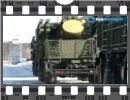
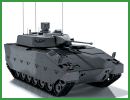















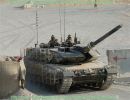
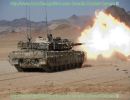

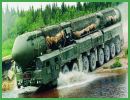
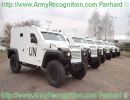











![Russia will complete the construction of chemical weapon destruction plants in 2011 and will destroy all chemical weapons stockpiles by 2012, a government official said on Wednesday. Russia signed the Chemical Weapons Convention banning the development, production, stockpiling, transfer, and use of chemical arms in 1993, and ratified it in 1997. The country has destroyed 18,000 metric tons, or 45% of its chemical weapons stockpiles as of December 2009. Gen. Nikolai Abroskin, head of the Federal Agency for Special Construction, said during a collegiate meeting at the agency that despite the recent financial crunch Russia would meet its obligations and destroy the remaining 22,000 metric tons of chemical weapons by 2012. The country has allocated $7.18 billion from the federal budget for the implementation of the program, and has so far built five chemical weapon destruction plants - in Gorny (Saratov Region), Kambarka (Republic of Udmurtia), Nizhny Novgorod, the Maradykovo complex (Kirov Region), and Siberia's Kurgan Region. Another two are under construction. Abroskin said the completion of chemical weapon destruction facilities remained a priority in 2010. "We should be able to launch the first stage of the facility in Pochep [Bryansk Region], and second stages of the facilities in Leonidovka [Penza Region] and Shchuchiye [Kurgan Region]...which will allow us to finish the construction of all chemical weapon destruction plants in 2011 and destroy all chemical weapons by 2012 in line with the federal program," he said. By 2016-2017, Russia aims to finish all the remaining work under the project, including decontamination and equipment dismantlement, the official said.](/images/stories/news/2010/march/small/Russia_Russian_plant_built_to_destroy_chemical_weapons_Saratov_Region_small_001.jpg)
